The Costume Gallery of Pitti Palace in Florence celebrates its 30th anniversary with a new exhibition dedicated to the “Women in the Spotlight in the Twentieth Century“: fashion icons and interpreters who went beyond the fashion designers’ messages, creating a personal style code.
|
Donne protagoniste del Novecento – Patty Pravo Gianni Versace oroton dress for Sanremo 84 – Galleria del Costume Firenze |
The Superintendent of the Polo Museale of Florence, Cristina Acidini, during the press conference explained that the clothes of the Costume Gallery of the Pitti Palace can’t be on display for more than 2/3 years for conservative reasons. This means that the Gallery usually has to hold a two-year exhibition, which tries to display as many items as possible, covering a large time laps, from the eighteenth century to the present days. Nonetheless, Caterina Chiarelli, the director of the Costume Gallery, explained that for the next two years the exhibition will be mainly focused on the twentieth century, dedicating each room to an important woman whose personality emerges from the garments she has worn, created or collected in her life.
The exhibition layout designed by the architect Mauro Linari, shows the most peculiar features of the women, matching the clothes with their memorabilia, photos or paintings.
 |
| Presentazione Donne protagoniste del Novecento – Galleria del Costume Firenze – Nov 2013 |
The first room is dedicated to Rosa Angela Caterina Genoni (1867-1954), an activist committed to the rights claim against the exploitation of female labor, but also a famous skilful seamstress considered as the “founder of Italian fashion”.
She began her seamstress apprenticeship at the age of ten, but it was only when she moved to France, after looking at the French fashion illustrators, that she realized the importance of creating a sort of “culture of the Italian style” by making albums with the ancient apparels taken from the Italian art masterpieces.
In 1906 she attended the Womenswear section of the International Exhibition in Milan presenting the result of her theories with 14 dresses made by the Humanitarian Female School (she was the director and teacher of the Tailoring section), inspired to the works of Botticelli, Bramante, Donatello, Ghirlandaio, Mantegna, Pisanello, Raphael, Titian and Veronese.
In the new setting of the Costume Gallery of Pitti Palace there are two of those 14 dresses: the Pisanello court cape and the Botticelli evening gown, accompanied by some illustrations of the book “Per una moda italiana: Modelli, Saggi, schizzi di abbigliamento femminile: 1906-1909”, in which Rosa Genoni showed all her creations inspired to ancient art and traditional costumes, revolutionizing the clothes decoration with the introduction of three-dimensional embroidery.
 |
| Donne protagoniste del Novecento – Rosa Genoni abito Primavera – Galleria del Costume Firenze |
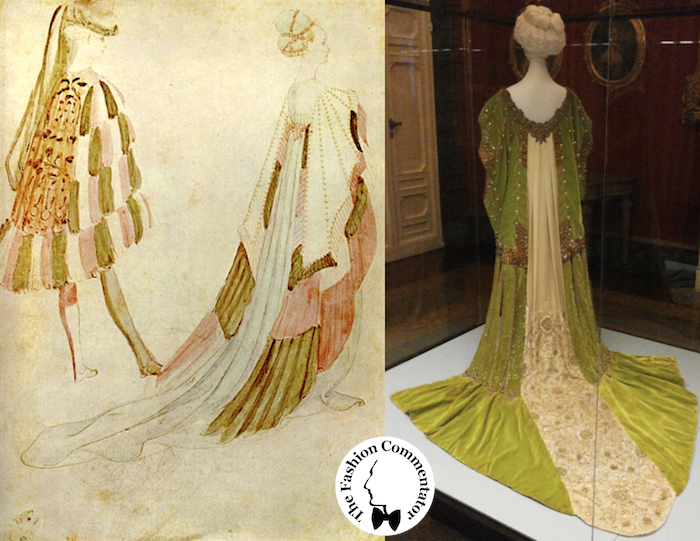 |
| Donne protagoniste del Novecento – Rosa Genoni mantello Pisanello – Galleria del Costume Firenze |
 |
| Donne protagoniste del Novecento – Rosa Genoni mantello Pisanello – Galleria del Costume Firenze |
The second room pays homage to the legendary actress Eleonora Duse (1858-1924). She was introduced to the fashion garments of the painter Mariano Fortuny by Gabriele D’ Annunzio. Since then, Eleonora Duse established a genuine relationship of friendship and admiration for the Spanish artist who made very unique dresses in his Venetian atelier. In the Costume Gallery we can see Mariano Fortuny dresses, tunics and surcoats dating between 1909 and 1921, a particular period in which Eleonora Duse was away from the scene, but still liked to wear unique dresses made of fine fabrics in cool and shiny shades.
 |
| Donne protagoniste del Novecento – Eleonora Duse |
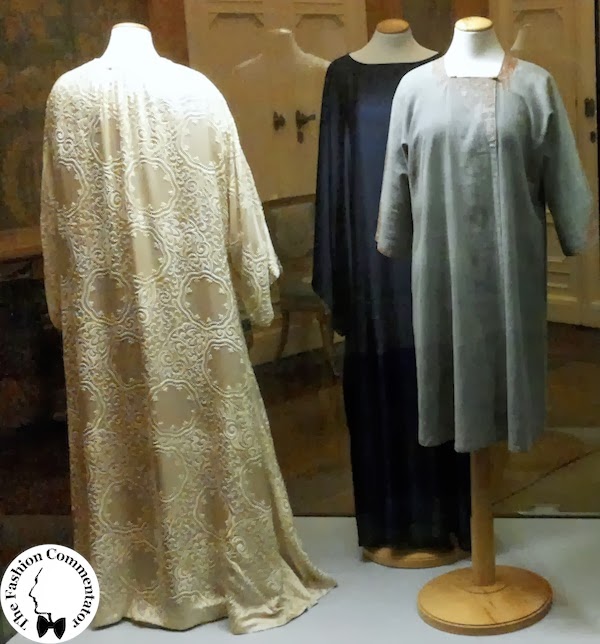 |
| Donne protagoniste del Novecento – Eleonora Duse abiti Mariano Fortuny |
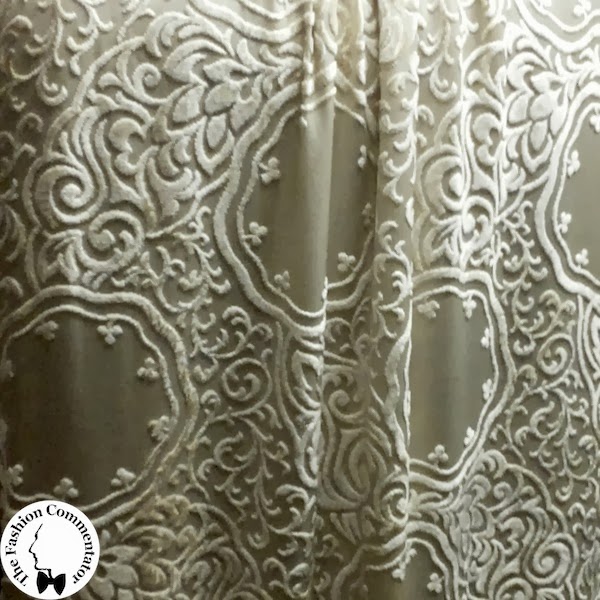 |
| Donne protagoniste del Novecento – Eleonora Duse dettaglio abito Mariano Fortuny |
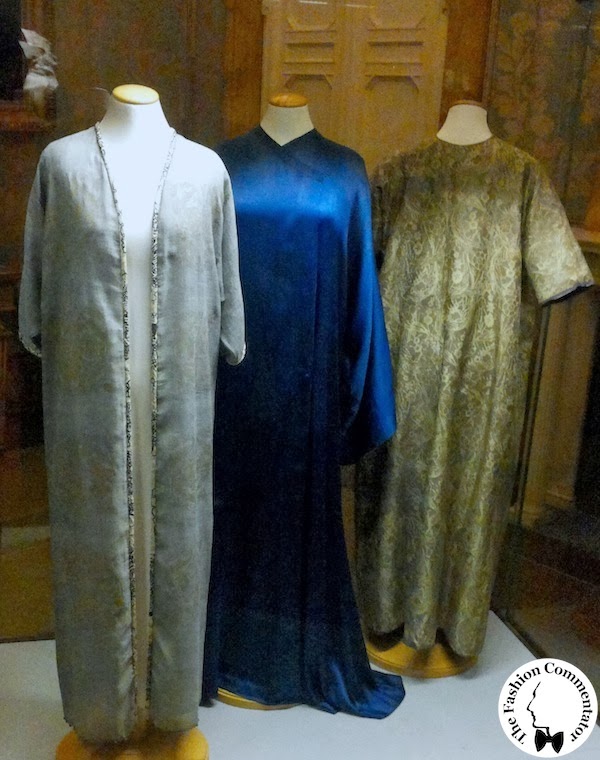 |
| Donne protagoniste del Novecento – Eleonora Duse abiti Mariano Fortuny |
 |
| Donne protagoniste del Novecento – Eleonora Duse dettaglio abito Mariano Fortuny |
The dresses on display in the third room bring the visitors in the salons attended by
Donna Franca Florio (1873-1950), a Sicilian noble woman who became famous during the Belle Époque, after she got married in 1893 with Ignazio Florio, the member of one of the richest families of the country, owner of fleet, industries, mines and trading companies. Since then her life was transformed into a multitude of worldly appearances, where her presence was always noticed and commented in the chronicles of the time. In the Costume Gallery there are a black velvet two-piece formal dress with deep V-neck and scroll cut-out motif embroidery,
reproduced even by the painter Giovanni Boldini (1901) in the version without bib; and the blue silk court cape by Ventura atelier in Milan, edged with golden cords arranged as Savoy nodes because from 1902 Donna Franca Florio became lady-in-waiting to the Queen of Italy.
 |
| Donna Franca Florio – Galleria del Costume Firenze |
 |
Donne protagoniste del Novecento – Donna Franca Florio cape by Ventura Atelier (1925-1930)
Galleria del Costume Firenze |
 |
Donne protagoniste del Novecento – Donna Franca Florio cape with Savoy golden nodes (1925-1930)
Galleria del Costume Firenze |
In the next room 4 dresses try to filling the void that the recent death of
Anna Piaggi has left in the world of contemporary fashion. Conceptual fashion journalist of the Double Pages on Vogue Italia, historic muse of Karl Lagerfeld and wife of the photographer Alfa Castaldi, Anna Piaggi always stood out for her personal way of interpreting fashion, collecting and wearing haute couture garments mixed with workwear or everyday objects transformed into accessories.
Caterina Chiarelli, the director of the Costume Gallery, explained me that the four dresses on display were purchased by the Italian Ministry of Heritage and Culture in 2009, when the Export Office of the Superintendent for the historical, artistic and ethno-anthropological heritage of Milan, suspended the export of 28 historical clothes owned by the journalist, ready to leave Italy for an auction in London. At the moment in the Costume Gallery there are on display a Maria Monaci Gallenga mantle, a Schiaparelli evening dress and two floral Paul Poiret capes whose Anna Piaggi was particularly fond of.
 |
| Karl Lagerfeld and Anna Piaggi wearing Maria Monaci Gallenga cape (1920) |
 |
| Anna Piaggi wearing Paul Poiret cape (1920) – Galleria del Costume Firenze |
 |
| Anna Piaggi – Paul Poiret cape (1911-1915) and Schiaparelli dress (1936-1937) |
The setting of the fifth room was possible thanks to Alessandro Quasimodo’s donation, the son of the Italian poet Salvatore Quasimodo and the actress, poet, writer and dancer Maria Cumani. Alessandro Quasimodo, who attended the press conference, remembered his mother not only as the muse of his father, but also as a vital, energetic and enthusiastic woman even when in 1986, at almost 80 year old she was the first dancer in the Fedora play by Umberto Giordano at the Verona Philharmonic Theatre. The garments on display prove the refined taste of Maria Cumani not only for the exotic-inspired stage costumes, but also in the fine vintage dresses given to her as presents from friends and admirers that she used for everyday life and special occasions (the black one from the 20s probably belonged to Sarah Bernhardt).
Maria Cumani – Galleria del Costume Firenze
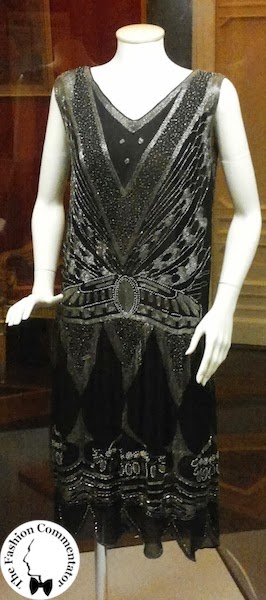 |
Maria Cumani – French dress (1920-1923)
belonged to Sarah Bernhardt |
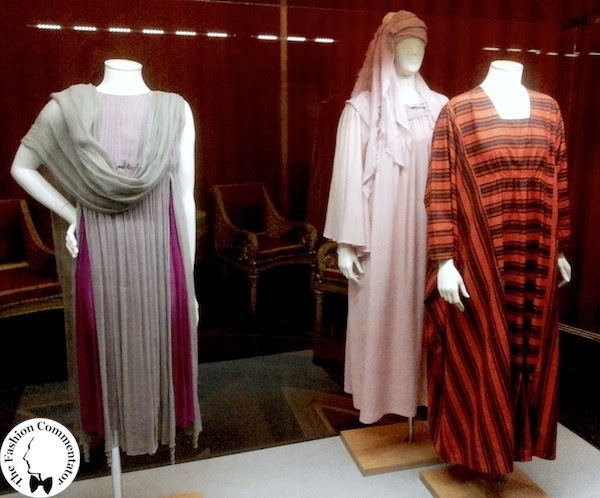 |
| Maria Cumani – Stage costumes – Galleria del Costume Firenze |
The sixth room is dedicated to Antonella Cannavò Florio, a talented pianist and wife of the Count Emilio Florio, Consul of Thailand in Rome, whose home became one of the most fashionable salons of the city between the 50s and 60s. The dresses on display have been donated to the Costume Gallery by Cristina Laspia, nephew of the Countess Antonella Cannavò Florio. They are a prove of the retro style spread amongst the richest Italian families in the 50s by Emilio Schuberth, the famous Roman couturier who was inspired by the nineteenth-century romantic clothing made with experimental materials. Just looking at the floral decorations and the tailoring constructions of the dresses belonging to Antonella Cannavò Florio we can understand how the Roman high society was linked to a sort of fashion fairytale of the past.
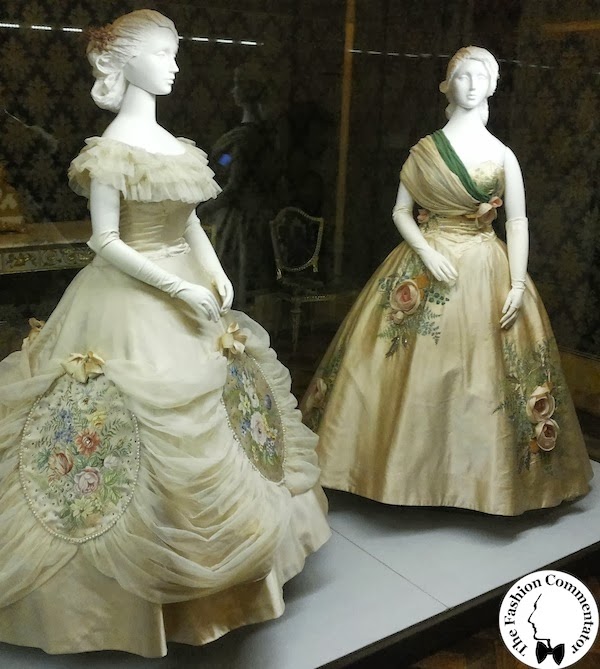 |
| Antonella Cannavò Florio – Emilio Schuberth dresses |
Antonella Cannavò Florio – Emilio Schuberth dress (1949/50)
 |
| Antonella Cannavò Florio – Emilio Schuberth dresses |
The tour continues with a room dedicated to the Italian singer Patty Pravo. She seems to descend the winding staircase of the Sanremo Music Festival 1984 wearing a wonderful metal mesh dress by Gianni Versace while singing “Per una bambola”.
On the side boxes there are the three other outfits worn in several editions of Sanremo Music Festival: two Gucci dresses from 1987 studded with fake pearls and sequins; and a Roberto Cavalli two-pieces embroidered dress from 2002. The set of this room designed by the architect Mauro Linari worths the visit to the Costume Gallery not only for Patty Pravo’s lovers, but for all those fashion curators and set-designers who look for a good example of how clothes can come alive outside the display cabinets.
 |
| Patty Pravo room – Galleria del Costume Firenze |
 |
| Patty Pravo room – Galleria del Costume Firenze |
 |
| Patty Pravo – Gianni Versace oroton dress for Sanremo 84 – Galleria del Costume Firenze |
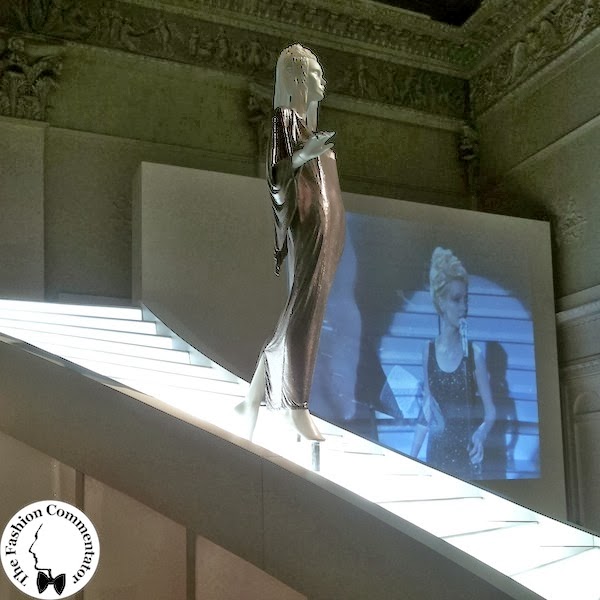 |
| Patty Pravo – Gianni Versace oroton dress for Sanremo 84 – Galleria del Costume Firenze |
 |
| Patty Pravo – Gianni Versace oroton dress for Sanremo 1984; Gucci dress for Sanremo 1987 |
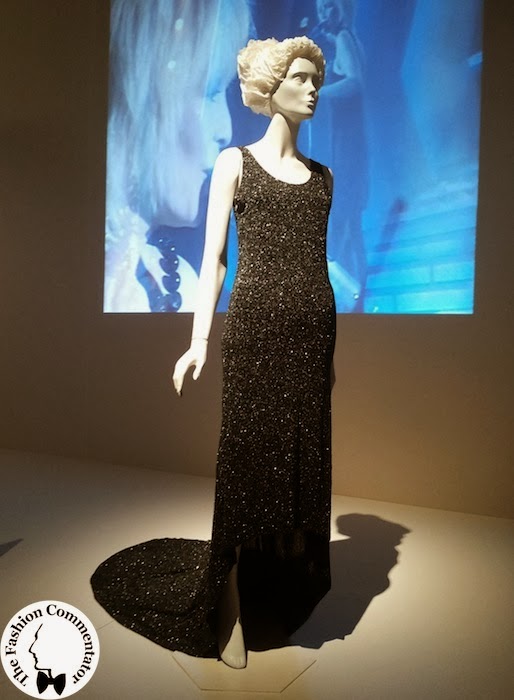 |
| Patty Pravo – Gucci dress for Sanremo 1987 |
 |
| Patty Pravo – Gucci dress for Sanremo 1987 (right); Roberto Cavalli dress for Sanremo 2002 (left) |
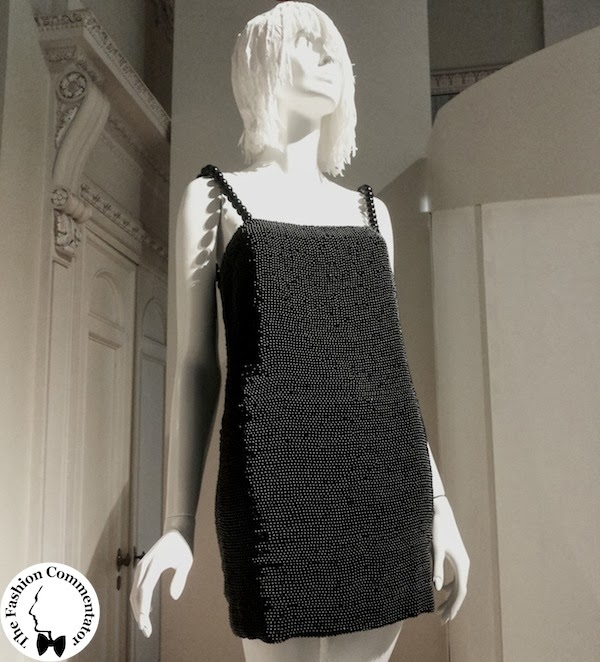 |
| Patty Pravo – Gucci dress for Sanremo 1987 – Galleria del Costume Firenze |
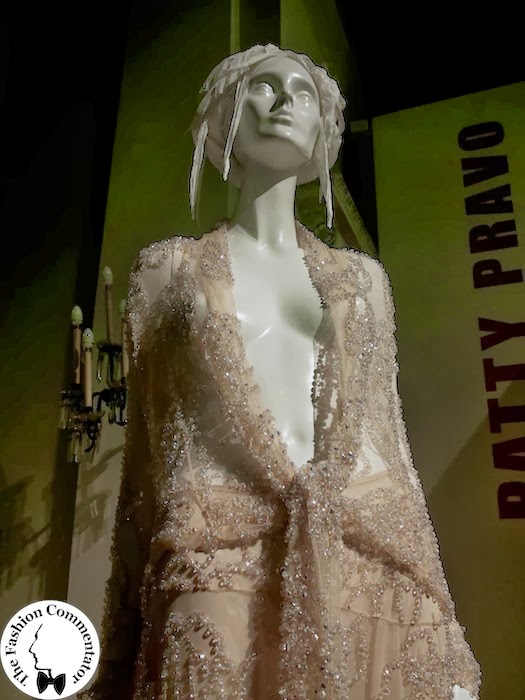 |
| Patty Pravo – Roberto Cavalli dress for Sanremo 2002 – Galleria del Costume Firenze |
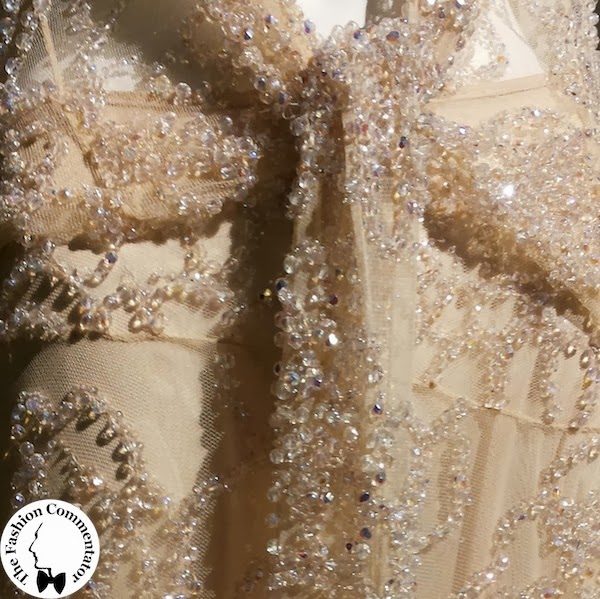 |
| Patty Pravo – Roberto Cavalli dress for Sanremo 2002 – Galleria del Costume Firenze |
The eighth room is dedicated to Susan Nevelson, model, painter, designer and invisible alter-ego of Ken Scott, who chose her as the only prints designer since the launch of his eponymous brand in 1962. Thanks to her colorful prints Ken Scott became one of the most revolutionary and unique fashion brand in the world. On display, in addition to clothes, fabrics and designs, there are memorabilia of Susan Nevelson with Ken Scott, but also some recent portraits in which the designer wears the latest creations of the young, talented and visionary milliner Eleonora Bruno.
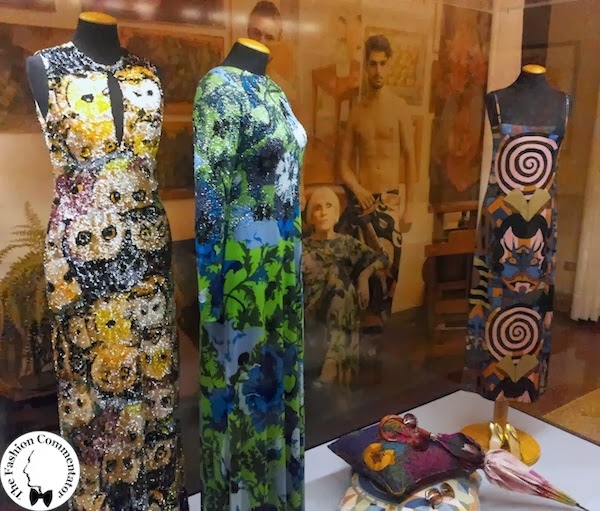 |
| Donne protagoniste del Novecento – Susan Nevelson for Ken Scott – Galleria del Costume Firenze |
Susan Nevelson – Galleria del Costume Firenze
Susan Nevelson wearing Eleonora Bruno headpiece – Galleria del Costume Firenze
In the ninth room there are the creations of Lietta Cavalli, an atypical Florentine figure in the fashion world. After inheriting her mother’s tailor’s shop in the 60s, she decided to launch her own knitwear brand called Mali, aiming to make unique handmade clothes that didn’t follow the fashion trends, which soon were recognized as art objects by the critics. After 30 years of success and critical acclaims, she broke free from the suffocating rhythm of the fashion system and she began to create rare fabrics similar to tapestries, meant to be used for interior decoration. In the Costume Gallery there are some of the dresses she donated, but also items she lent for the occasion, in addition to books on her work and some furnishings such as tapestries, chairs and armchairs.
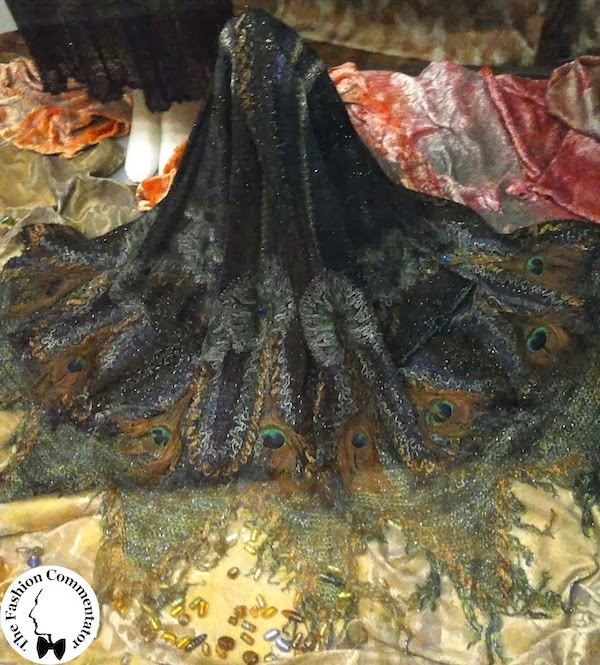 |
| Donne protagoniste del Novecento – Lietta Cavalli – Galleria del Costume Firenze |
 |
| Donne protagoniste del Novecento – Lietta Cavalli dress detail- Galleria del Costume Firenze |
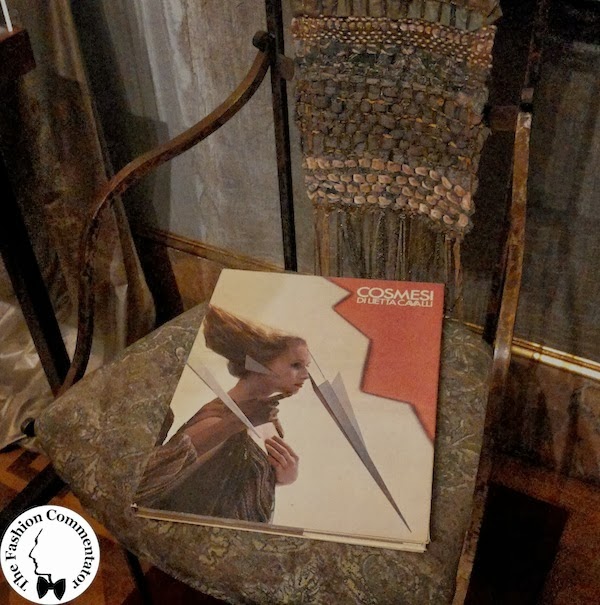 |
| Donne protagoniste del Novecento – Lietta Cavalli furniture and book – Galleria del Costume Firenze |
 |
| Donne protagoniste del Novecento – Lietta Cavalli dresses – Galleria del Costume Firenze |
 |
| Donne protagoniste del Novecento – Lietta Cavalli dresses and furnishing- Galleria del Costume Firenze |
The two following rooms are dedicated to Cecilia Matteucci Lavarini, one of the most important Italian fashion collectors, always present in the front row of the main fashion shows, at the art or fashion auctions, exhibition openings, art fairs, theatre and music performances worldwide. Featuring an incredible culture, she might be considered as the Marchesa Casati of our times, thanks to her endless wardrobe through which she experiences unusual matches and combinations according to a very personal and avant-guard style. The setting of the two rooms is expected to become a key destination for all the true fashion lovers because Cecilia Matteucci Lavarini herself has styled every single outfit with such amazing details that reveal her eclectic and unique personality. Iconic Yves Saint Laurent, Chanel and Nina Ricci dresses dialogue in an almost disarming harmony with Prada, Comme des Garçons, antique jewelry and an old English cape from the 20s. Two cabinets of curiosities in which you get lost and it’s impossible to note every single detail conceived and curated by the collector herself, who announced that with her testament she will donate 3000 pieces of French haute couture to the Costume Gallery.
Cecilia Matteucci Lavarini – Comme des Garçons jacket (SS2004); English velvet cape (1920)
Cecilia Matteucci Lavarini – Commes des Garçons (SS2004)
 |
| Cecilia Matteucci Lavarini – Nina Ricci haute couture 1985/1987 – Galleria del Costume Firenze |
Cecilia Matteucci Lavarini – Sartoria Teresa Bernardelli su modello di Yves Saint Laurent FW1981;
Yves Saint Laurent FW1993 evening dress
 |
| Cecilia Matteucci Lavarini – Chanel SS1994 |
 |
| Cecilia Matteucci Lavarini – YSL dress 1987-1990; Prada FW2007 |
The twelfth room is dedicated to
Anna Rontani, Italian writer and journalist between the 50s and 70s, whose wardrobe was sold at an auction in Florence last year. Some of the clothes on display in the Gallery have a particular story for me. A year ago, in fact,
I published an article about the auction in which, after an extensive research, I’ve reported some biographical information on
Elda Pavan, describing her as an experimental Venetian weaver of the 60s. After a few months I was contacted by Mr. Enrico Sartoni, Elda Pavan’s son, who explained me that his mother wasn’t the weaver emerged from my researches, but an high fashion designer and also a close friend of Anna Rontani, with whom they often met all together in Versilia. As soon as I could I added an errata in the blog post with due thanks to Mr. Sartoni, and after some time I was contacted by Francesco Campidori, a young Florentine fashion collector who read my post (the rare notebooks in which Anna Rontani used to pin the clothes she wanted to buy, come from his collection). He told me about the new exhibition setting of the Costume Gallery and he needed to get in touch with Mr. Sartoni for documenting the new catalog and finally throwing a light on Elda Pavan, one of the forgotten figures of the Italian fashion.
You can easily imagine my thrill when I met all the people involved in this story at the exhibition opening and for being part of an important page of Italian fashion thanks to my blog.
 |
| Donne protagoniste del Novecento – Anna Rontani room – Galleria del Costume Firenze |
 |
Donne protagoniste del Novecento – Anna Rontani
Loris Azzaro 1989 – Galleria del Costume Firenze |
 |
Donne protagoniste del Novecento – Anna Rontani
Sartoria Sargentini (1950-1955) – Galleria del Costume Firenze |
Anna Rontani – Cocktail dress 70s; Jole Veneziani ensemble 1964
 |
| Anna Rontani – Sartoria Sargentini Wrap Skirt 1959/1960 |
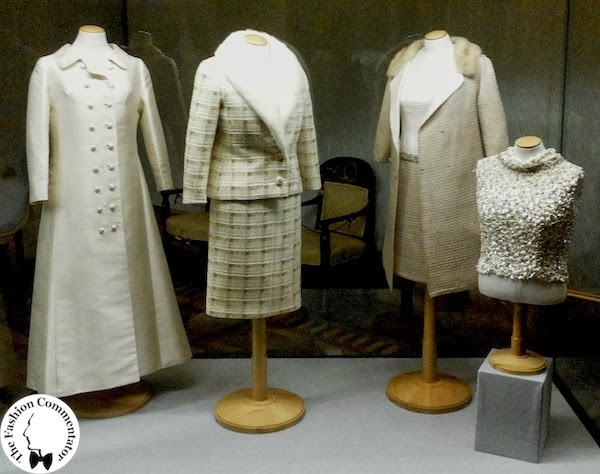 |
Anna Rontani – from right: Elda Pavan (att.) cocktail blouse 1968-70; Renato Balestra cocktail ensemble 1965;
Elda Pavan suit 1968-70; Elda Pavan evening coat 1968-70 |
The clothes selection ends with the rooms dedicated to the wedding dresses, the white clothes designed for the fateful moment in which each woman becomes a star for a day. Models of local tailors and from the major international brands alternate in an overview that re-traces the history of the wedding dresses of the twentieth century, from the 10s up to the 80s with a gown by Oleg Cassini.
Finally, the room reserved to the world of accessories with three distinct sections. The first is dedicated to Atelier Rwanda, a project launched in 2007 with the financial support of Soroptimist International by Bettina Scholl Sabbatini and some designers from the San Marino University and the University of Architecture of Venice (IUAV). Their aim is to help Rwandan women’s economic independance, diversifying their production of traditional objects made with the ancient weaving techniques, introducing new jewelry and accessories models.
 |
| Donne protagoniste del Novecento – Atelier Rwanda – Galleria del Costume Firenze |
Donne protagoniste del Novecento – Atelier Rwanda
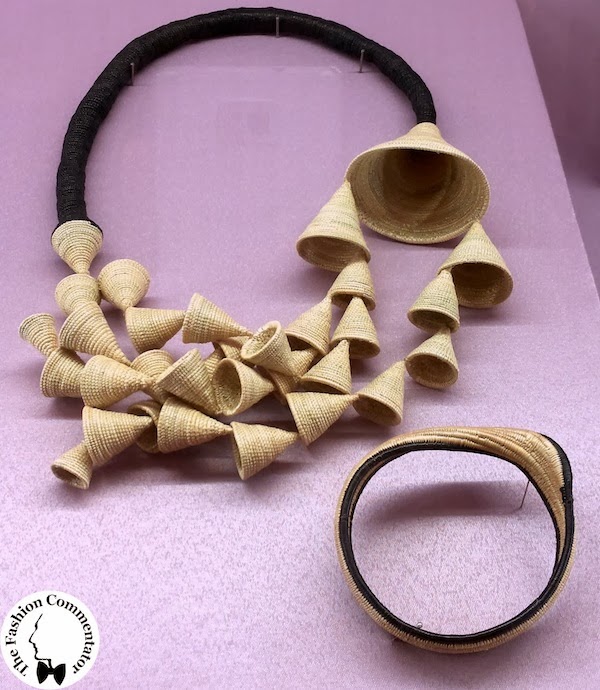 |
| Donne protagoniste del Novecento – Atelier Rwanda – Galleria del Costume Firenze |
 |
| Donne protagoniste del Novecento – Atelier Rwanda – Galleria del Costume Firenze |
Another section is dedicated to Flora Wiechmann Savioli, woman with a strong artistic sensibility born in Florence in 1917 and married to the architect Leonardo Savioli, who encouraged her to express her creativity realizing (from the mid-fifties until 1968) jewelry pieces featured by a postmodern style using various materials such as silver, semi-precious stones, steel, iron and brass, as well as painting on fabrics, prints and engravings preserved since 2000 at the Costume Gallery.
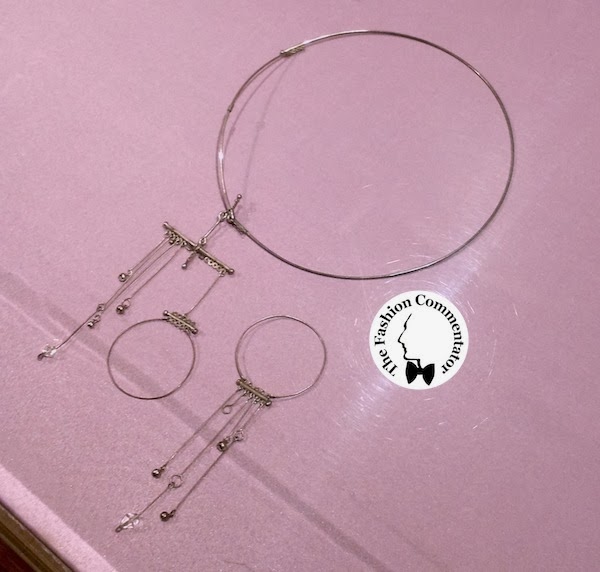 |
| Donne protagoniste del Novecento – Flora Wiechmann Savioli – Galleria del Costume Firenze |
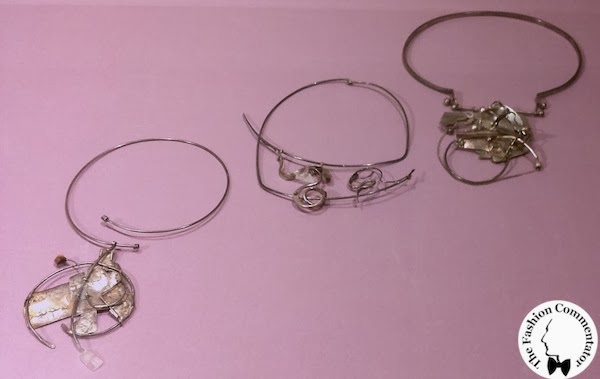 |
| Donne protagoniste del Novecento – Flora Wiechmann Savioli – Galleria del Costume Firenze |
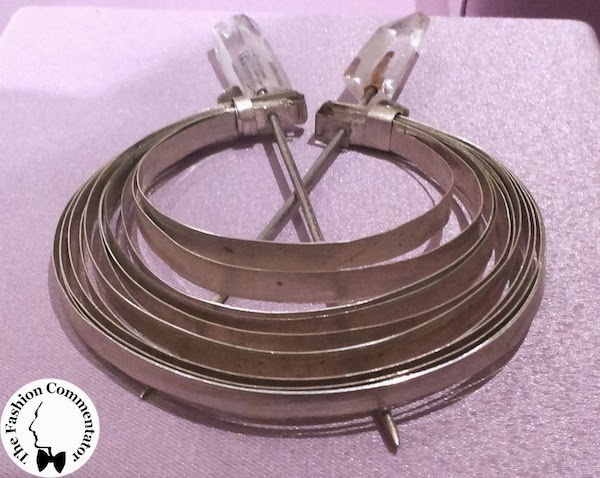 |
| Donne protagoniste del Novecento – Flora Wiechmann Savioli – Galleria del Costume Firenze |
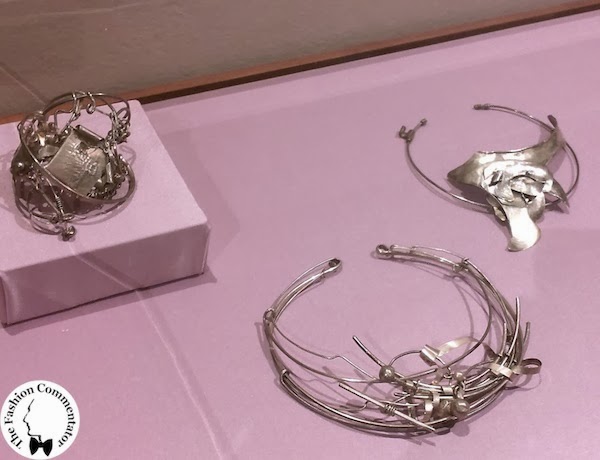 |
| Donne protagoniste del Novecento – Flora Wiechmann Savioli – Galleria del Costume Firenze |
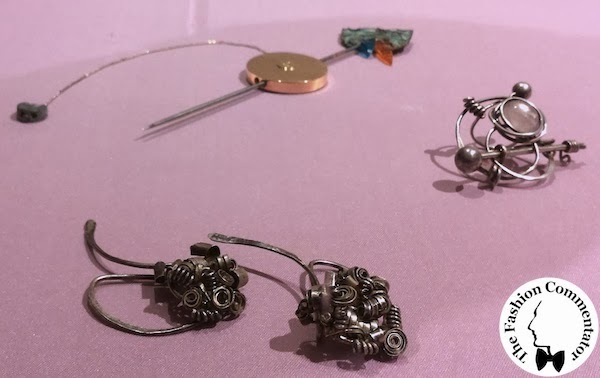 |
| Donne protagoniste del Novecento – Flora Wiechmann Savioli – Galleria del Costume Firenze |
The last “woman in the spotlight” is Angela Caputi, the Florentine contemporary jewelry designer famous throughout the world for being a pioneer in the use of synthetic resins since the 70s, when she launched her eponimous line Angela Caputi Giuggiù. She introduced in the jewelery design the concept of personalized jewelry by respecting the identity of each individual customer. Her inclination for materials research, the study of natural shapes and the anatomy of the human body have made her workshop in Via Santo Spirito one of the key places of the Florentine craftmanship creativity, a destination not only for tourists, but for a sought and loyal clientele who can appreciate the direct contact with the designer. Among the pieces Angela Caputi has donated to the Costume Gallery there are three necklaces and two pins, that re-trace the basic steps of her forty-year artistic production.
 |
| Donne protagoniste del Novecento – Angela Caputi – Galleria del Costume Firenze |
Alessandro Masetti – The Fashion Commentator




















































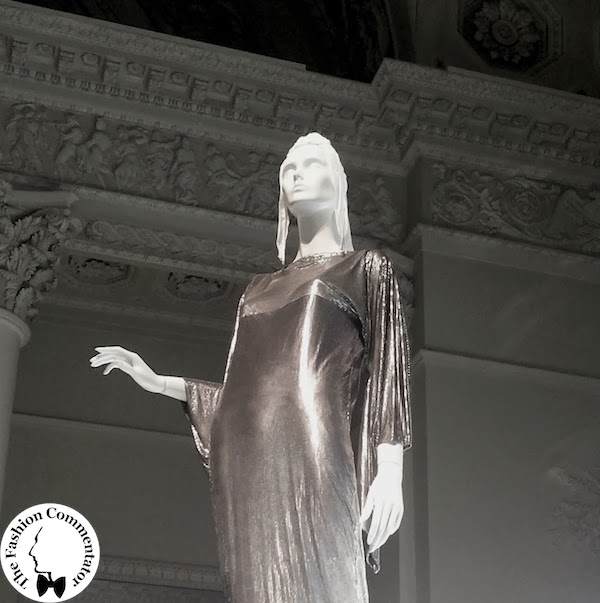

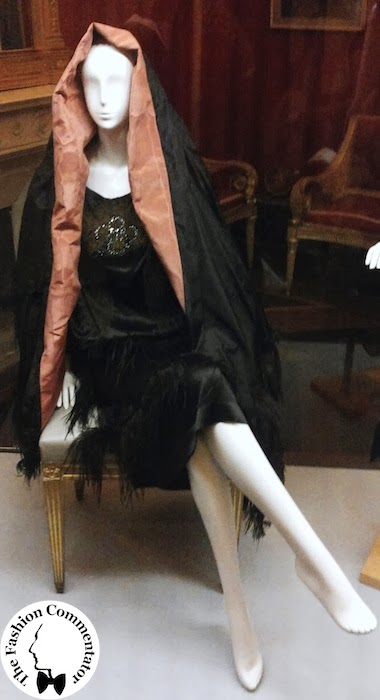




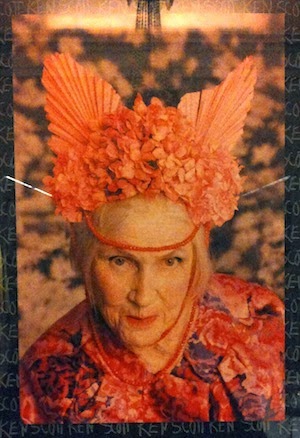



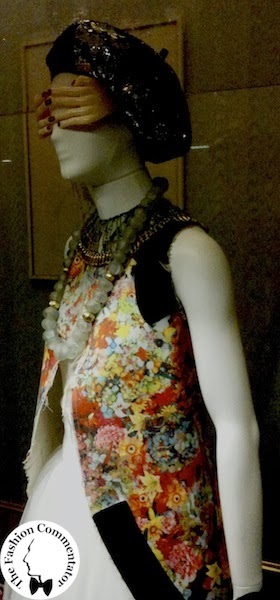

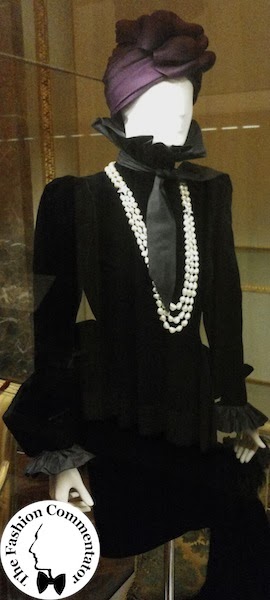

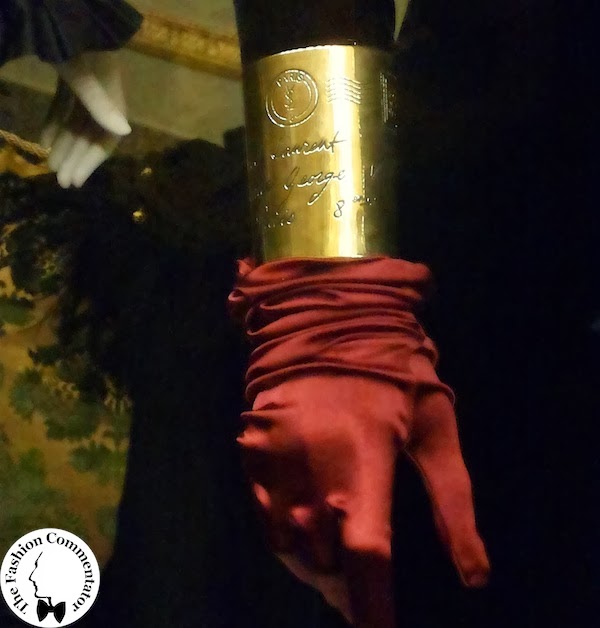
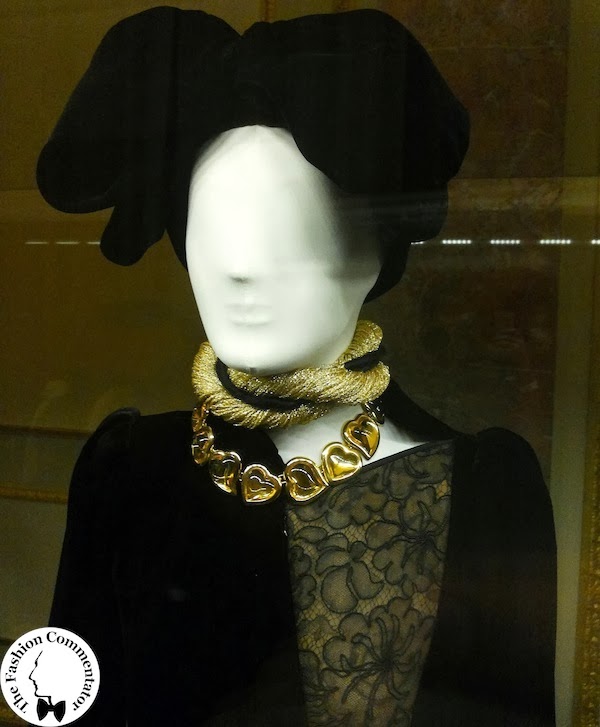



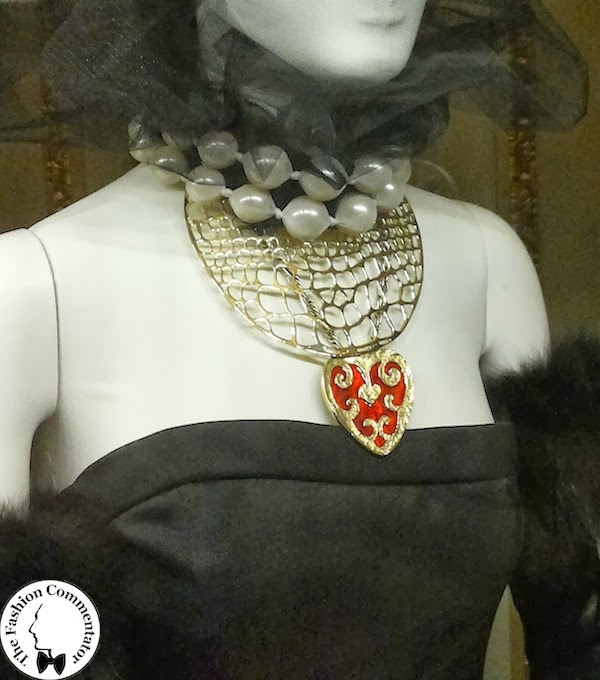

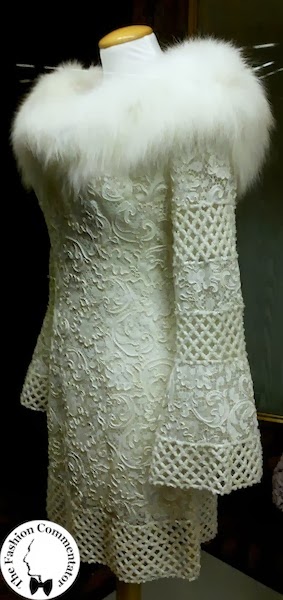


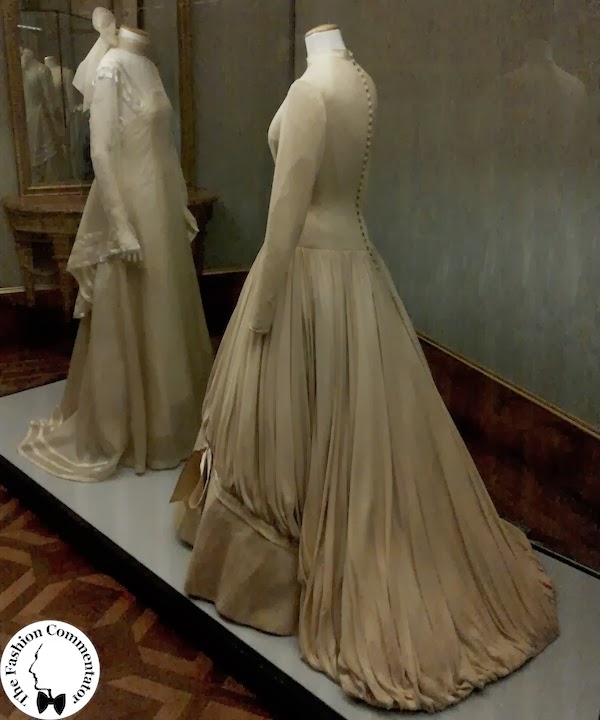

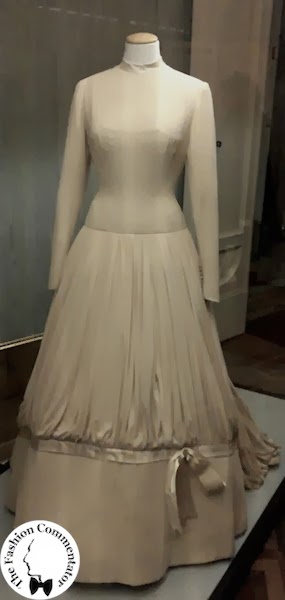
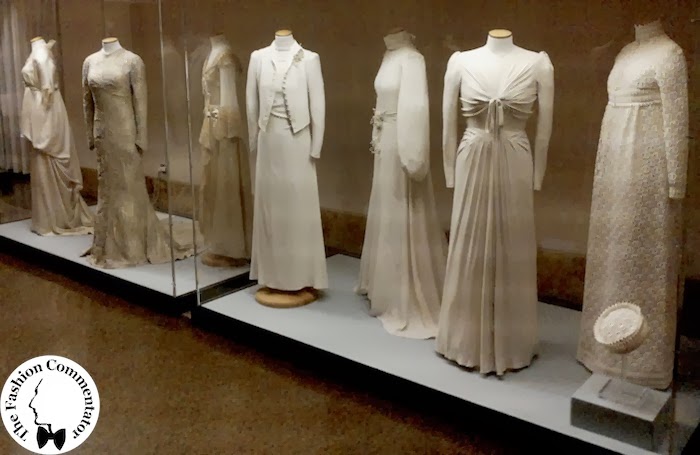



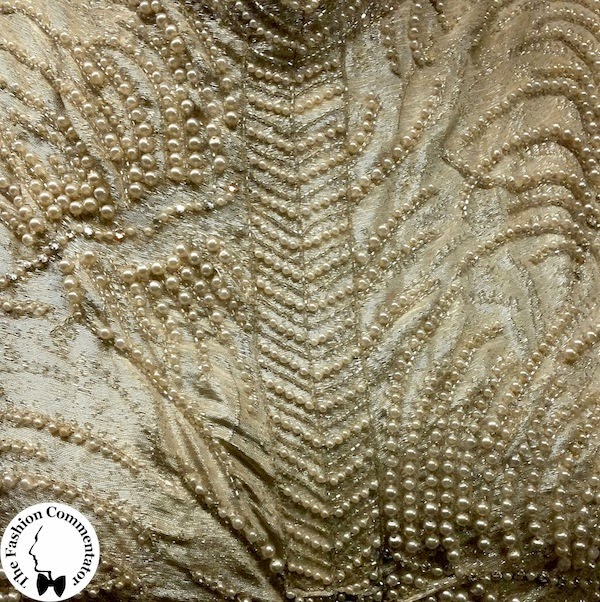

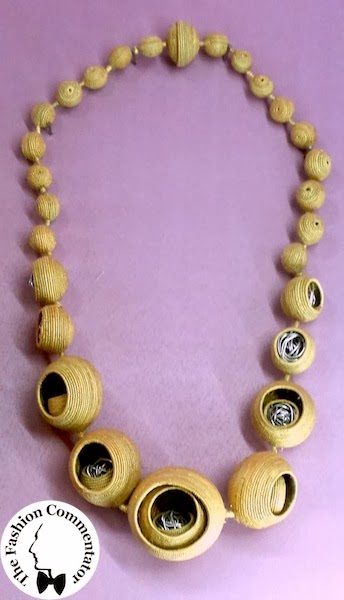
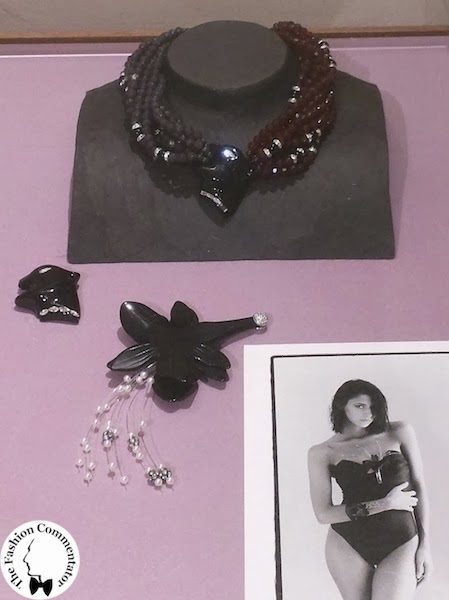


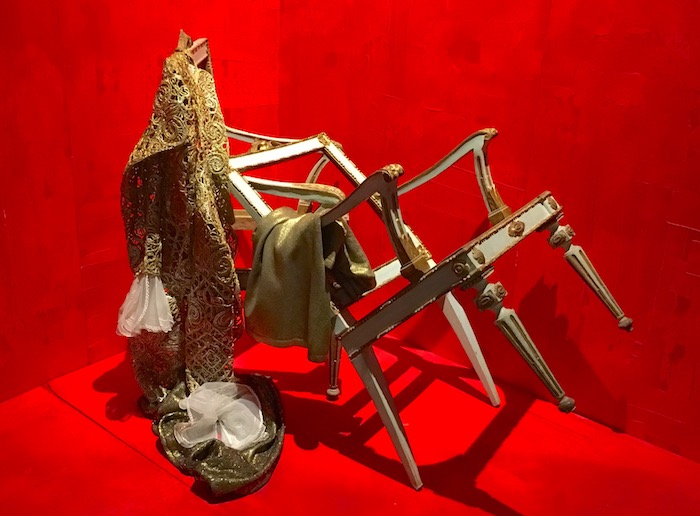
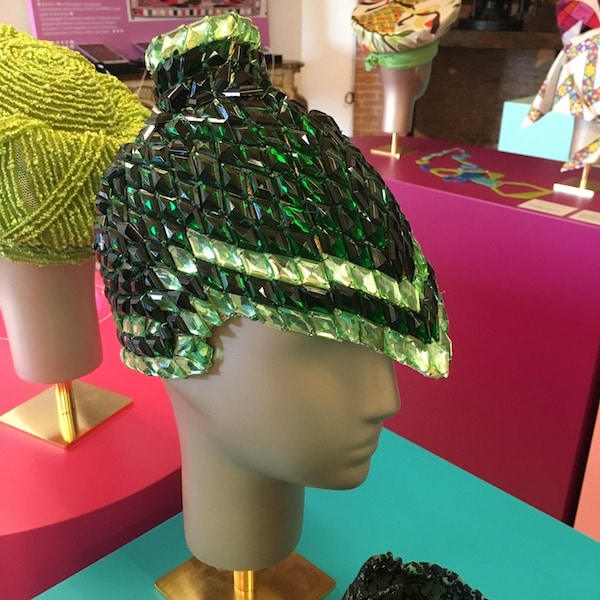
vabbè ale…comunque questi non sono “abiti”!!!
queste sono vere e proprio opere d’arte e storia!
io ti invidio davvero perchè tu puoi vederli con i tuoi occhi ma ti ringrazio tantissimo soprattutto perchè riesci a condividere queste bellezze anche con persone lontane (tipo me da Palermo)
quindi un gigantesco grazie per le foto e per i post dai quali imparo sempre tantissimo!
un bacione
Syriously in Fashion
Syriously Facebook Page
E’ così semplice lasciarsi “inglobare” all’interno degli stili così forte dei designer, che l’idea di una mostra che invece esalti la personalità (e il gusto) di quelle donne che sono diventate interpreti “superando” in un certo senso lo stilista è qualcosa di davvero originale.
Grazie Alessandro per averci guidato attraverso le sale di questo posto incantato … devo dire che gli abiti di Patty Pravo sono ancora assolutamente modernissimi!
http://www.pescaralovesfashion.com
A stunning exhibition of very talented designers and artisans. Exquisite work!
Wow, la mostra merita sicuramente una visita!!
Gli abiti sono tutti bellissimi, quelli di Patty Pravo sono proprio wow!
Ma perché sei andato senza di meeeeeeeeee!
Sai ti confesso una cosa: la Galleria del Costume di Firenze è uno dei pilastri della mia educazione nel campo moda..la prima volta che sono venuta a Firenze a trovare Marci (avevo 12 anni) mia mamma mi ha portata a visitare il museo e io ero estasiata da tutti quegli abiti da principessa..e poi si sa che la scemenza mi è rimasta inside! Mi sa che ho visitato troppi castelli e palazzi da bimba che ora ho problemi con la realtà! In luoghi del genere mi sento in pace con il mondo!
XOXO
Cami
Paillettes&Champagne
Bellissima mostra. Non vivere a Firenze ti fa perdere anche cose (e soprattutto) cose come questa. Ignorante, conoscevo solo Anna Piaggi, Patti Pravo ed Eleonora Duse. Donna Franca Florio è una scoperta, bellissimi abiti.
Con questo post hai mostrato a tutti quanto ami la moda e quanto, con le tue parole, riesci a trasmettere grandi emozioni. Post meraviglioso!!
Daniela Kaos
questi capi sono delle vere e proprie sculture! che meraviglia! sarebbe stato bello vederli da vicino!
Meraviglioso percorso nella storia del costume! Sei un osservatore attento ed interessato ed è un piacere leggerti e, come sai, io apprezzo anche moltissimo i tuoi collage e gli accostamenti grafici con cui accompagni il testo: anche questa volta si sono rivelati di altissimo livello!
Bellissimo post. Complimenti come sempre Ale!
http://www.thebigiofactor.blogspot.com
Io sono per caso tra queste pagine .
Lei è sicuramente uno storico del costume.
E un grande appassionato di moda.
E’ d’accordo con me che la moda è l’autoritratto della società?
E le mostre di costume come questa che lei ci ha così bene presentato in queste pagine ce lo ricordano.
Cordialità
Teresa d. ( venditrice di abbigliamento )
Gentile Teresa,
Grazie per questo bel commento. Diciamo che al momento posso definirmi un grande appassionato di moda e che non mi dispiacerebbe in futuro realizzare tanti sogni in questo ambito.
Concordo con la sua espressione perché come dice lei, la moda non è solo il ritratto, ma un vero e proprio autoritratto della società, in quanto sempre più spesso al giorno d’oggi le ispirazioni provengono dalla strada e gli stilisti creano collezioni che inneggiano, sbeffeggiano, educano, riproducono, rileggono la società stessa.
La società viene osservata, metabolizzata e quindi reinterpretata con un linguaggio diverso, ma comunque è sempre soggetto e oggetto del proprio ritratto, perciò sì condivido in pieno la sua espressione, ma dico anche che non potrebbe essere altrimenti e lo sosteneva anche Georg Simmel un bel po’ di tempo fa nel suo piccolo saggio “La Moda” del 1895. Le consiglio la lettura di quest’ultimo (neanche 100 pagine e rieditato nella collana Oscar mondadori) per ritrovare già nelle sue teorie i meccanismi della moda, della vendita, ma soprattutto del passare delle tendenze. Le anticipo solo che tutto dipendeva (e tuttora dipende) dalla disparità economica della società!
Grazie ancora per il suo appassionato commento,
Alessandro